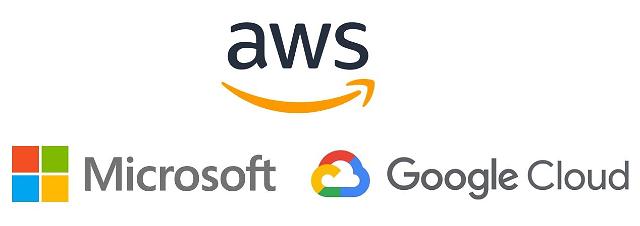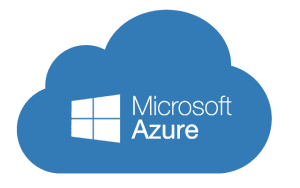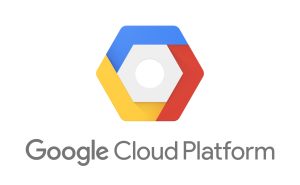
Cloud computing is no longer a matter of “if,” but “how.” As digital transformation accelerates across industries, cloud adoption has become an inevitable step for businesses of all sizes. At the forefront of this evolution stand three major cloud providers—Amazon Web Services (AWS), Microsoft Azure, and Google Cloud Platform (GCP). Each brings its own strengths, philosophies, and service ecosystems, making the selection process far more complex than a simple feature comparison.
This post aims to provide a deep, strategic evaluation of the three platforms—not just in terms of technical capabilities, but also through the lens of cost efficiency, enterprise alignment, and long-term flexibility. Whether you’re a CTO shaping a multi-year roadmap or a developer launching your first cloud-native app, this guide will offer valuable insights to help you make informed decisions tailored to your specific context.
📌 Table of Contents
- Introduction – The Moment of Decision in the Cloud Era
- Fundamentals of Cloud Platforms & Comparison Framework
- Amazon Web Services (AWS): The Pioneer of Public Cloud
- Microsoft Azure: The Enterprise-Focused Cloud Ecosystem
- Google Cloud Platform (GCP): The Data-Driven Innovation Hub
- In-Depth Comparative Analysis by Key Criteria
- Strategic Selection Guide: Matching the Platform to Your Needs
- Conclusion – No Perfect Answer, Only the Right One for You
1. Introduction – The Moment of Decision in the Cloud Era
Just a few years ago, “the cloud” was considered an emerging technology—an option primarily for the digitally adventurous. Today, it’s an operational backbone across every industry. However, the question has shifted from “Should we move to the cloud?” to “Which cloud platform should we choose?”
Answering that question is more nuanced than it might seem. Each platform—AWS, Azure, and GCP—offers distinct advantages, pricing models, service ranges, and integration approaches. Your ideal choice depends not only on technical requirements but also on strategic alignment with your organization’s long-term goals.
This guide is designed to go beyond surface-level comparisons. It will dive into the underlying philosophies of each platform, explore real-world use cases, and offer a structured framework for decision-making. By the end, you’ll have the clarity needed to make a cloud strategy that’s both pragmatic and future-ready.
2. Fundamentals of Cloud Platforms & Comparison Framework
Before comparing cloud platforms, it’s essential to understand the layers of services they provide. The cloud ecosystem is typically divided into three service models: IaaS, PaaS, and SaaS. Each model offers a different level of abstraction, control, and responsibility—tailored to varying user needs and organizational goals.
IaaS (Infrastructure as a Service)
IaaS delivers virtualized computing resources such as servers, storage, and networking over the internet. This model provides maximum flexibility and control over the infrastructure, making it ideal for system architects and DevOps teams. Examples include AWS EC2, Azure Virtual Machines, and GCP Compute Engine.
# Example: Launching an EC2 instance on AWS
aws ec2 run-instances \
--image-id ami-12345678 \
--count 1 \
--instance-type t2.micro \
--key-name MyKeyPairPaaS (Platform as a Service)
PaaS abstracts the infrastructure and provides a platform for developers to build, deploy, and manage applications. It eliminates the need for managing underlying hardware or OS-level configurations. Popular services include AWS Elastic Beanstalk, Azure App Services, and Google App Engine.
SaaS (Software as a Service)
SaaS delivers fully functional software applications via the cloud, removing the need for installation or maintenance. End-users simply access the software through a web browser. Notable examples include Microsoft 365, Google Workspace, and Salesforce.
Framework for Comparing Cloud Providers
To evaluate AWS, Azure, and GCP effectively, we’ll use a framework built on six key dimensions. These comparison criteria reflect both technical depth and strategic alignment capabilities.
| Evaluation Criteria | Description |
|---|---|
| 1. Global Infrastructure Reach | Number of regions, availability zones, and data centers worldwide |
| 2. Service Breadth | Range of compute, storage, database, AI/ML, DevOps services offered |
| 3. Cost & Pricing Flexibility | On-demand vs reserved pricing models, cost calculators, billing visibility |
| 4. Security & Compliance | Certifications, encryption options, IAM policies, industry compliance |
| 5. Integration & Ecosystem | Connectivity with existing tools, APIs, and third-party services |
| 6. Learning Resources & Support | Availability of tutorials, documentation, training, and community support |
This structured comparison model will allow us to evaluate each provider in a way that balances technical capability with business practicality. In the next section, we begin with the most dominant force in the cloud market—Amazon Web Services.
3. Amazon Web Services (AWS): The Pioneer of Public Cloud

Launched in 2006, Amazon Web Services (AWS) revolutionized the IT landscape by introducing the world’s first major public cloud platform. Over the years, AWS has evolved into a sprawling ecosystem of cloud services, renowned for its reliability, scalability, and depth of offerings. As the undisputed leader in market share, AWS remains the benchmark against which all other providers are measured.
AWS Vision and Strategic Positioning
AWS follows a customer-obsessed philosophy—aiming to provide any IT resource “as a service” to enable rapid experimentation and innovation. Its modular, pay-as-you-go model empowers organizations of all sizes to move fast and scale globally, without upfront infrastructure costs.
Core Services Overview
AWS offers over 200 fully featured services across compute, storage, networking, databases, machine learning, analytics, and more. Here are some of the most widely adopted:
- EC2 (Elastic Compute Cloud): Scalable virtual servers in the cloud
- S3 (Simple Storage Service): Secure and highly available object storage
- RDS (Relational Database Service): Managed databases like MySQL, PostgreSQL, Oracle
- Lambda: Serverless computing for event-driven workloads
- CloudFront: Global Content Delivery Network (CDN) for low-latency distribution
# Create a basic Lambda function using AWS CLI
aws lambda create-function \
--function-name HelloLambda \
--runtime nodejs18.x \
--role arn:aws:iam::123456789012:role/execution_role \
--handler index.handler \
--zip-file fileb://function.zipStrengths of AWS
- Unmatched Global Reach: Over 30 regions and 100+ availability zones worldwide
- Service Breadth and Depth: Covers nearly every aspect of cloud computing, from AI to IoT
- Mature Ecosystem: Extensive third-party integrations, partner network, and marketplace
- Enterprise-Grade Security: Comprehensive IAM, encryption, monitoring, and compliance tools
Considerations and Limitations
- Pricing Complexity: Multiple pricing models (On-Demand, Reserved, Spot) can be confusing
- Learning Curve: The sheer volume of services may overwhelm new users
Best-Fit Use Cases
| Use Case | Why AWS? |
|---|---|
| Global SaaS or consumer-facing platforms | Global infrastructure with high availability and scalability |
| Enterprise-grade applications | Support for hybrid networking, security, compliance, and DevOps pipelines |
| Event-driven microservices | Serverless architecture with AWS Lambda and EventBridge |
In summary, AWS is ideal for organizations seeking maximum flexibility, innovation potential, and infrastructure maturity. While it may demand a steeper learning investment upfront, the long-term return in terms of performance and scalability is substantial.
In the next section, we’ll examine Microsoft Azure—particularly how its tight integration with enterprise tools and hybrid cloud capabilities makes it a compelling option for established organizations.
4. Microsoft Azure: The Enterprise-Focused Cloud Ecosystem

While Microsoft Azure entered the cloud market a few years after AWS, it has rapidly grown into a formidable competitor—particularly in the enterprise space. Backed by Microsoft’s longstanding dominance in operating systems, productivity software, and enterprise infrastructure, Azure excels at integrating cloud with existing IT environments.
Azure’s Strategic Focus
Azure is built with a clear objective: to empower organizations—especially large enterprises—to move to the cloud without abandoning their legacy systems. Through robust support for hybrid cloud models and seamless connectivity with tools like Active Directory and Office 365, Azure offers a familiar and secure path to modernization.
Core Services Overview
Azure delivers a comprehensive portfolio spanning infrastructure, platform, and software services. Below are some of its most popular offerings:
- Azure Virtual Machines: Scalable cloud-based virtual servers for Windows or Linux
- Blob Storage: Highly scalable object storage for unstructured data
- Azure App Services: Fully managed platform for web apps and APIs
- Azure SQL Database: Managed relational database service built on SQL Server
- Cosmos DB: Globally distributed, multi-model NoSQL database service
# Example: Creating a Virtual Machine in Azure
az vm create \
--resource-group MyResourceGroup \
--name MyVM \
--image UbuntuLTS \
--admin-username azureuser \
--generate-ssh-keysStrengths of Azure
- Enterprise Integration: Tight compatibility with Microsoft tools like Office 365, Teams, and Dynamics
- Hybrid Cloud Leadership: Services like Azure Arc and Azure Stack support hybrid and multi-cloud deployments
- Security & Compliance: Broadest compliance coverage in the industry with over 90 certifications
- B2B Identity & Access Control: Deep integration with Azure Active Directory and enterprise-grade IAM
Considerations and Limitations
- Steep Learning Curve for Developers: Complex service naming and overlapping features can be confusing
- Geographic Rollout Delays: New services are often released in U.S. regions first, with delays in other zones
Best-Fit Use Cases
| Use Case | Why Azure? |
|---|---|
| Large enterprises with legacy IT | Seamless transition through existing Windows Server and AD environments |
| Organizations prioritizing security and compliance | Strong regulatory coverage and enterprise-grade governance tools |
| Hybrid infrastructure strategies | Native support for hybrid cloud and multi-cloud orchestration |
Azure stands out as the platform of choice for businesses already embedded in the Microsoft ecosystem. It provides a secure, scalable, and well-integrated cloud journey—especially for enterprises seeking to modernize at scale without disrupting existing workflows.
Next, we’ll explore Google Cloud Platform, a favorite among developers and data scientists for its cutting-edge tools in analytics, AI, and cloud-native application design.
5. Google Cloud Platform (GCP): The Data-Driven Innovation Hub

Google Cloud Platform (GCP) has carved a unique position in the cloud market by leveraging Google’s technological DNA—rooted in data, distributed computing, and AI. While it may not match AWS or Azure in sheer breadth, GCP excels where it matters most for innovation: advanced analytics, machine learning, and developer experience.
GCP’s Philosophy and Differentiation
GCP is engineered for organizations that prioritize agility, cloud-native architecture, and data intelligence. From the company that brought you Kubernetes and TensorFlow, GCP emphasizes open-source leadership, high-performance infrastructure, and next-generation AI tools. Its platform is especially attractive to startups, developers, and research-intensive teams.
Core Services Overview
GCP offers a streamlined yet powerful suite of cloud services. Its standout capabilities lie in real-time analytics, big data management, and end-to-end AI solutions.
- Compute Engine: Scalable and customizable virtual machines with per-second billing
- Cloud Storage: Highly durable and unified object storage with fine-grained access controls
- BigQuery: Serverless, ultra-fast analytics data warehouse for petabyte-scale querying
- Cloud Functions: Event-driven serverless compute platform for lightweight workloads
- Vertex AI: Unified machine learning platform for building, training, and deploying models at scale
# Example: Querying public dataset using BigQuery CLI
bq query --use_legacy_sql=false \
'SELECT name, SUM(number) as total
FROM `bigquery-public-data.usa_names.usa_1910_2013`
GROUP BY name
ORDER BY total DESC
LIMIT 10'Strengths of GCP
- Data Analytics & AI Leadership: Industry-best tools for real-time analytics, big data processing, and ML lifecycle management
- Developer Experience: Clean UI/UX, robust CLI tools, and deep IDE integrations (Cloud Code, VS Code)
- Open-Source Champion: Deep commitment to open technologies like Kubernetes, Istio, and Apache Beam
- Global Private Network: Google’s fiber-based backbone ensures fast, secure global communication
Considerations and Limitations
- Smaller Ecosystem: Compared to AWS and Azure, GCP has fewer third-party integrations and partners
- Less Enterprise Penetration: May lack legacy system support and enterprise app ecosystem maturity
Best-Fit Use Cases
| Use Case | Why GCP? |
|---|---|
| AI/ML-driven product development | Vertex AI offers seamless integration from training to deployment |
| Real-time analytics at scale | BigQuery enables serverless querying of terabytes in seconds |
| Cloud-native startups and SaaS builders | Modern developer tools and competitive pricing for new ventures |
GCP is not a general-purpose cloud for everyone—it is a precision toolset for builders and analysts. If your organization is data-intensive, AI-forward, or looking to leverage open-source technologies at scale, GCP offers unmatched capabilities. But for more traditional enterprise workloads, GCP may require additional integration effort.
In the next section, we’ll bring these platforms side by side, evaluating them through the lens of our comparison framework to highlight key strengths and trade-offs.
6. In-Depth Comparative Analysis by Key Criteria
Now that we’ve explored each cloud provider individually, it’s time to compare them side by side. Using our previously defined evaluation framework, we’ll break down key differences and trade-offs across performance, pricing, global infrastructure, developer experience, and more.
Side-by-Side Comparison Table
| Category | AWS | Azure | GCP |
|---|---|---|---|
| Global Reach | Highest number of regions and availability zones | Strong regional expansion with enterprise focus | Smaller footprint but superior global network |
| Service Breadth | Extensive portfolio across all domains | Robust in enterprise and hybrid offerings | Focused on data, analytics, and AI |
| Pricing & Cost Management | Diverse pricing models; potential for optimization | Enterprise licensing discounts; Hybrid Benefits | Straightforward pricing; sustained use discounts |
| Security & Compliance | Advanced tools (IAM, Shield, KMS); broad certifications | Best suited for regulated industries and B2B access | Strong core security; fewer enterprise governance features |
| Developer Experience | Comprehensive but complex; steep learning curve | Microsoft-native developers benefit from tight integration | Sleek UI/CLI, excellent for cloud-native developers |
Performance & Network Considerations
GCP offers a performance edge for globally distributed workloads due to its private fiber-optic backbone network, minimizing latency and maximizing throughput. AWS, while not using its own fiber globally, ensures high availability through widespread data centers. Azure integrates with Microsoft’s global edge and CDN network for regional acceleration, especially beneficial for Microsoft-based applications.
Pricing Strategy at a Glance
- AWS: Flexible pricing (On-Demand, Reserved, Spot); potential complexity in estimating total cost
- Azure: Consistent enterprise agreements with hybrid benefits for existing licenses
- GCP: Transparent pricing with automatic discounts based on usage patterns
Support & Learning Ecosystem
All three platforms provide extensive documentation, online training, and community resources. AWS has the largest developer and partner ecosystem. Azure benefits from Microsoft Learn and certification tracks. GCP, while leaner in size, excels in well-documented tutorials, especially for data science and ML use cases.
Summary
Each provider dominates a different domain. AWS leads in breadth and scale, Azure in enterprise and hybrid integration, and GCP in AI and analytics. The best choice often depends on your technical requirements, internal expertise, and future vision.
In the next chapter, we’ll move from comparison to action—exploring real-world decision strategies for choosing or combining platforms based on business needs.
7. Strategic Selection Guide: Matching the Platform to Your Needs
Selecting the right cloud platform is not just a matter of technical evaluation—it’s a strategic decision that impacts cost structures, innovation velocity, and long-term scalability. In this section, we’ll outline actionable strategies for different types of organizations, industry verticals, and use cases. We’ll also address when to consider multi-cloud and hybrid cloud architectures.
Recommendations by Organization Size
| Organization Type | Recommended Platform | Rationale |
|---|---|---|
| Startups & Small Teams | GCP or AWS | Fast deployment, generous free tiers, strong developer tools |
| Mid-sized Enterprises | Azure or AWS | Hybrid integration, identity management, diverse workloads |
| Global Corporations | AWS + Azure | Multi-region deployments, security and compliance scale, business continuity |
Recommendations by Industry
- Finance & Government: Azure stands out with its compliance certifications, identity governance, and hybrid support
- Media, Gaming, Content Delivery: AWS with CloudFront and Global Accelerator offers superior performance
- Healthcare & Life Sciences: GCP is ideal for genomic data processing, AI modeling, and privacy-aware analytics
- Retail & E-Commerce: AWS offers mature tools for scalability, customer analytics, and global reach
- Manufacturing & Logistics: Azure supports IoT, supply chain automation, and ERP system integrations
When to Choose a Multi-Cloud Strategy
Multi-cloud involves leveraging services from more than one cloud provider, either to maximize strengths or reduce dependency on a single vendor. While operational complexity increases, so does architectural flexibility.
- Best for: Enterprises needing regional redundancy, service diversity, or regulatory compliance
- Example: AWS for core infrastructure + GCP for analytics & AI workloads
- Example: Azure for identity & security + GCP for ML pipeline execution
Hybrid Cloud Use Cases
Hybrid cloud allows organizations to combine on-premises infrastructure with public cloud services. This model is ideal for companies with data residency constraints or phased cloud adoption strategies.
- Recommended platform: Azure, with tools like Azure Arc and Azure Stack for seamless hybrid management
- Typical scenarios: Government agencies, banks, or organizations with sensitive data requiring on-prem processing
Key Takeaway
Ultimately, there is no one-size-fits-all solution. The right cloud strategy should align with your organization’s technical goals, compliance needs, budget constraints, and existing technology stack. Whether you choose a single platform or combine several, your decision should enable both innovation and resilience.
In the final section, we’ll recap the strategic highlights and help you move forward with clarity and confidence in your cloud journey.
8. Conclusion – No Perfect Answer, Only the Right One for You
The cloud landscape is vast, dynamic, and evolving at breakneck speed. Choosing between AWS, Azure, and GCP isn’t just a matter of feature comparison—it’s about making an intentional decision aligned with your organization’s values, needs, and trajectory.
AWS offers the most extensive ecosystem, ideal for global scalability and innovation at scale. Azure provides unmatched integration with enterprise IT and hybrid environments, making it the natural choice for Microsoft-centric organizations. GCP shines in the data-driven era, empowering teams to build and deploy AI-powered solutions with agility and precision.
But here’s the truth: there is no universally perfect platform. What matters is that you define the right selection criteria—cost, control, security, developer experience, or data capabilities—and evaluate the cloud not as a product, but as a strategic asset.
Sometimes the best answer may not be a single cloud. Many organizations now embrace multi-cloud or hybrid models to reduce risk, increase flexibility, and tailor infrastructure to specific needs. The future of cloud computing isn’t about choosing one cloud—it’s about designing the right mix that supports your growth.
So, which cloud is right for you? The answer starts with your unique challenges, and ends with a platform that helps you solve them—efficiently, securely, and intelligently.
May this guide serve as your compass as you chart the course of your cloud strategy.
